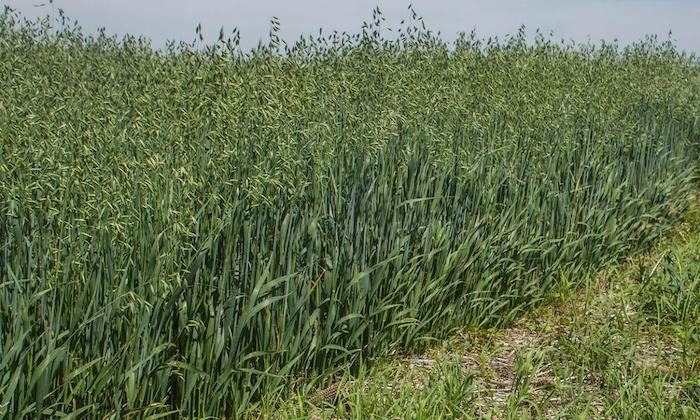Producers are already thinking of field work and planting crops, especially small grains. South Dakota is a leading oat producer in the U.S. In 2020, 10.7 million bushels of grain were harvested from 140,000 acres (USDA-NASS), which was about 45% of the total acres planted. The rest of the acres were presumably harvested for hay and other forages due to its high nutrient value. Every year, producers choose to grow oats for both grain and forage in South Dakota. Climate in South Dakota is best suited for spring oats.
Planting Time
Oats are a cool-season crop that responds well in cooler climates. Planting is recommended early in the spring or as soon as the ground can be worked. Minimum germination temperature is about 35°F, however, slightly higher soil temperature (>40°F) can speed up the germination and emergence. Planting early provides a cooler climate for optimal tiller growth and panicle production. Early planting also helps to avoid the risk of high temperatures during seed fill that can lead to smaller seed size, reduced yield and test weight. Optimum seeding time for oats in South Dakota can range from late March (southern regions) to late April (northern regions).
Variety Selection
Producing a successful crop starts with variety selection. Certified seed assures a crop with desired yield, quality and other agronomic characteristics. In addition to yield and seed quality, newer improved varieties also possess tolerance to common diseases and pests. For food-grade quality, millers generally prefer grain with higher test weight. Performance of available varieties and advanced breeding lines can be found in the latest Oat Variety Trial Results, released annually through the activities of South Dakota State University (SDSU) Extension and the South Dakota Agricultural Experiment Station at SDSU.
Seeding Rate
Seeding rate of oats can typically ranges from 2-2.5 bushels per acre depending upon the seed size. To achieve full yield potential, the desired live plants at harvest are 1.2 million per acre or 28 plants per square foot. Extremely high seeding rates can cause severe lodging and decreased test weight. Rates can be marginally increased if seeding late or slightly decreased if planting in a low-moisture field. Seeding rate for forage production can be similar to that of grain production. When grown under an organic management system, slightly higher seeding rate is recommended for early weed suppression. The ideal seed depth for planting is 1.5-2 inches; seeding deeper than 2.5 inches may lead to significant stand loss.
Fertilizer Management
When making a fertilizer management plan, a fall soil test and nitrogen (N) credit from the previous crop is strongly recommended, which may vary depending on the yield goal. The South Dakota Fertilizer Recommendation Guide suggests: 1.3 × Yield Goal - STN (soil test N) - LC (legume credit). However, recent studies have shown that the N coefficient of 1.3 can be reduced in the range of 0.7-0.9. Please consult with SDSU Extension while making an N fertilizer plan for oats grown for grain in South Dakota. View our latest Fertilizer Recommendation Guide for more information.







Post a comment
Report Abusive Comment